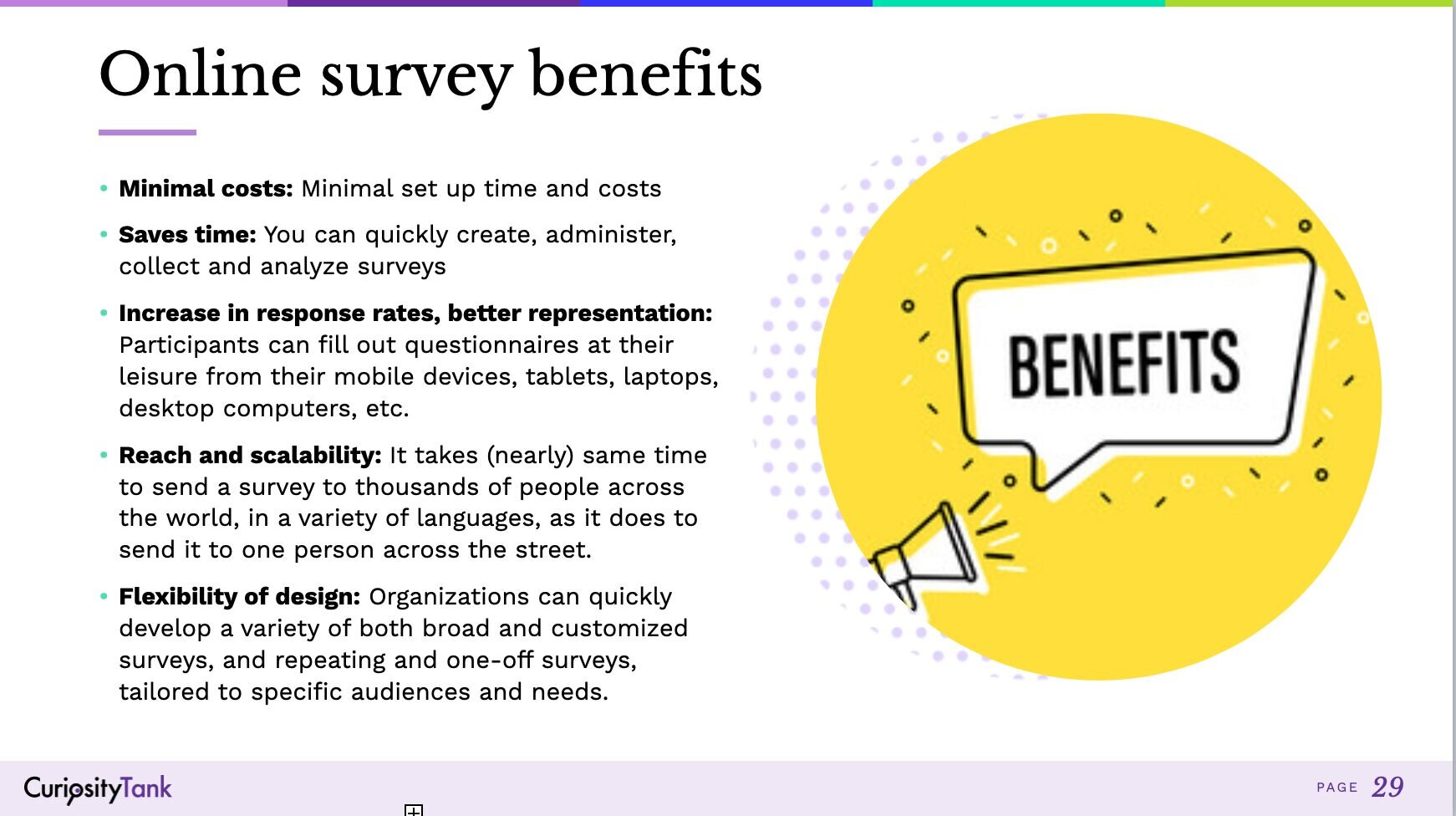Benefits and drawbacks to online surveys
One of my biggest pet peeves is that the democratization of survey software creates false confidence that authoring reliable and actionable surveys are easy to accomplish. THEY ARE NOT. It takes years to master the art of sophisticated and reliable survey creation. Here are some other pros and cons.
Online Survey Benefits
There are lots of pros and cons to using online surveys.
Minimal costs: Minimal setup time and costs
Saves time: You can quickly create, administer, collect and analyze surveys
Increase in response rates, better representation: Participants can fill out questionnaires at their leisure from their mobile devices, tablets, laptops, desktop computers, etc.
Reach and scalability: It takes (nearly) the same time to send a survey to thousands of people across the world, in a variety of languages, as it does to send it to one person across the street.
Flexibility of design: Organizations can quickly develop a variety of both broad and customized surveys, and repeating and one-off surveys, tailored to specific audiences and needs.
Anonymity: Anonymous surveys allow participants to feel more comfortable providing open and honest feedback. This can also have a positive impact on completion rates.
Objectivity: Well written surveys add objectivity by eliminating influence on responses that may be introduced in telephone or in-person surveys, thus yielding more valid responses
Automation in data Input and handling: Online survey data is more accurate than research that requires manual data compilation because the responses go directly to an online database
Quick results: Online surveys yield real-time results allowing orgs to analyze the feedback and quickly address any issues or concerns.
Online Survey Drawbacks
The democratization of survey software creates false confidence that authoring reliable and actionable surveys are easy to accomplish
Using statistics on small sample size can be misleading, even dangerous
Survey fatigue has resulted in fewer people participating and believing that action will be taken as a result
Poor timing of survey distribution can impact both response rates and quality of responses
Leading questions impact the quality of responses and validity of learnings
Inaction-able questions are a waste of time
Cannot uncover in-depth or detailed responses. Because there is not moderator/interviewer, it is not suitable for ask open-ended questions because there is no trained interviewer to explore respondent’s answers
Inability to reach challenging populations due to required internet access. Examples include the elderly and people who reside in remote areas.
Survey fraud: Some people answer online surveys to get the incentive, not with a desire to contribute to the advancement of the study.
Please add to this list!




